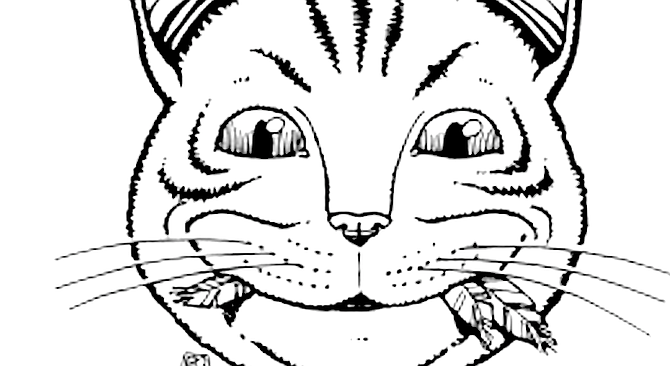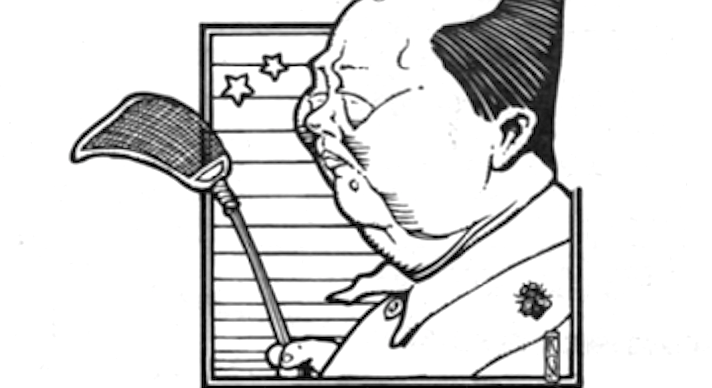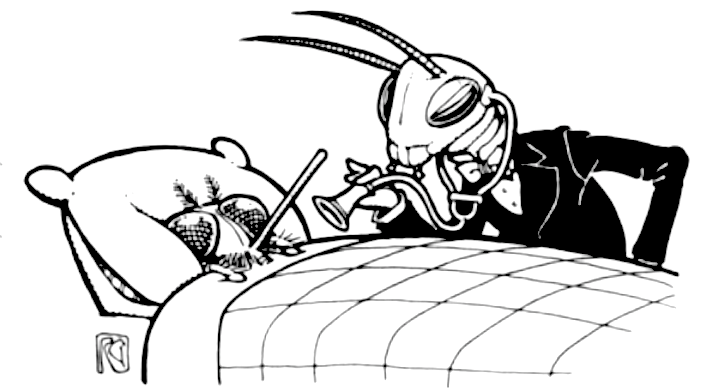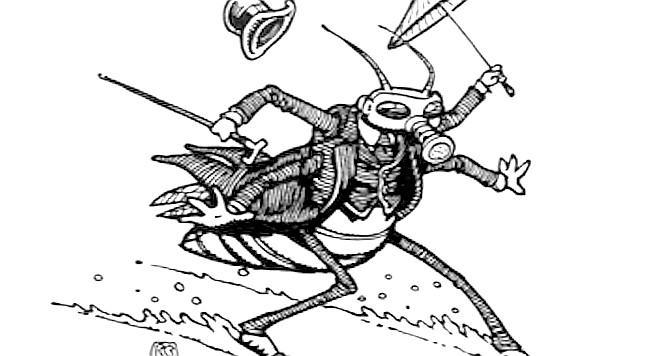 Facebook
Facebook
 X
X
 Instagram
Instagram
 TikTok
TikTok
 Youtube
Youtube

Of 9000-plus bird species, 6000 are in decline, 1000 heading for extinction. Urban Wisconsin has 1295 free-roaming cats per square mile. Cats kill 1 to 3 million birds each day in the U.S. Every free-roaming cat kills 50 to 100 birds annually, and urban cats kill more than rural cats. Birds make up 20 percent of all the small animals killed by cats.
By Matthew Alice, September 22, 1994 | Read full article

As UC Berkeley's Margie Profet explains it, the first trimester, when morning sickness is usually at its worst, is the time the developing embryo is most susceptible to toxins that cause serious birth defects. All body systems and structures are being established in a process of cell differentiation at this time. Morning sickness is the mother’s body sensing and rejecting potentially harmful substances.
By Matthew Alice, August 4, 1994 | Read full article
We've got ’em to help keep our eyeballs moist. Fish certainly don’t have that problem. They don’t sleep the same way we do, and they don’t have problems with blowing dust or sand. In short, fish don’t need eyelids (though sharks, skates, and rays have a clear eyelid-like structure). So to achieve a streamlined contour, which fish do need, eyelids are eliminated from the basic body design.
By Matthew Alice, March 10, 1994 | Read full article

Mao was notorious for these campaigns, which included battles against rats, mice, flies, and dogs, as well as birds. Whatever population happened to be rebuilding would be the new target. And it still goes on. The most recent attack on flies began in 1992. I’m not sure that explains why your friend’s photos were bugless, but with the anti-pest consciousness in Beijing, probably just out of camera range was a Chinese patriot with a fly swatter.
By Matthew Alice, November 16, 1995 | Read full article
When he’s prowling around in dark places, his whiskers help him determine whether a space is wide enough to crawl through. They’re like curb feelers on Dad’s Olds, but sensitive enough to feel a tiny puff of air. Whiskers act as an extension of a cat’s eyes. But like all hair shafts, whiskers fall out on their own periodically, and new ones begin to grow again.
By Matthew Alice, August 24, 1995 | Read full article

We mostly pay attention to human-dog interactions and observe tail wags when the animal is happy to see its owner but also slightly apprehensive. If you watch dog-dog interactions, you’ll often see a tail wag as a threat before a fight or in other conflict situations. The act of tail wagging squeezes those message-bearing scent glands and sends a smellogram to the other dog to let him know what’s up.
By Matthew Alice, December 16, 1993 | Read full article

Since flies aren’t particularly complex organisms, they usually go from a lively musca domestica to musca mortissimo in short order, with only a fleeting period spent as musca not feeling so hot. They don’t languish and play out the last act of Camille or exhibit the human symptoms of whatever illness they’ve acquired.
By Matthew Alice, October 21, 1993 | Read full article

Beginning in ancient times, mankind figured out that certain things (smoke, citronella, pennyroyal among them) kept the biters at bay. Then, nobody cared why; now we care but can’t figure it out. But one of the primary forces in the assault on the mosquito mystery is the Department of Defense, so rest assured that many decades and misspent billions from now, we’ll have some sort of answer.
By Matthew Alice, April 20, 1995 |Read full article


Of 9000-plus bird species, 6000 are in decline, 1000 heading for extinction. Urban Wisconsin has 1295 free-roaming cats per square mile. Cats kill 1 to 3 million birds each day in the U.S. Every free-roaming cat kills 50 to 100 birds annually, and urban cats kill more than rural cats. Birds make up 20 percent of all the small animals killed by cats.
By Matthew Alice, September 22, 1994 | Read full article

As UC Berkeley's Margie Profet explains it, the first trimester, when morning sickness is usually at its worst, is the time the developing embryo is most susceptible to toxins that cause serious birth defects. All body systems and structures are being established in a process of cell differentiation at this time. Morning sickness is the mother’s body sensing and rejecting potentially harmful substances.
By Matthew Alice, August 4, 1994 | Read full article
We've got ’em to help keep our eyeballs moist. Fish certainly don’t have that problem. They don’t sleep the same way we do, and they don’t have problems with blowing dust or sand. In short, fish don’t need eyelids (though sharks, skates, and rays have a clear eyelid-like structure). So to achieve a streamlined contour, which fish do need, eyelids are eliminated from the basic body design.
By Matthew Alice, March 10, 1994 | Read full article

Mao was notorious for these campaigns, which included battles against rats, mice, flies, and dogs, as well as birds. Whatever population happened to be rebuilding would be the new target. And it still goes on. The most recent attack on flies began in 1992. I’m not sure that explains why your friend’s photos were bugless, but with the anti-pest consciousness in Beijing, probably just out of camera range was a Chinese patriot with a fly swatter.
By Matthew Alice, November 16, 1995 | Read full article
When he’s prowling around in dark places, his whiskers help him determine whether a space is wide enough to crawl through. They’re like curb feelers on Dad’s Olds, but sensitive enough to feel a tiny puff of air. Whiskers act as an extension of a cat’s eyes. But like all hair shafts, whiskers fall out on their own periodically, and new ones begin to grow again.
By Matthew Alice, August 24, 1995 | Read full article

We mostly pay attention to human-dog interactions and observe tail wags when the animal is happy to see its owner but also slightly apprehensive. If you watch dog-dog interactions, you’ll often see a tail wag as a threat before a fight or in other conflict situations. The act of tail wagging squeezes those message-bearing scent glands and sends a smellogram to the other dog to let him know what’s up.
By Matthew Alice, December 16, 1993 | Read full article

Since flies aren’t particularly complex organisms, they usually go from a lively musca domestica to musca mortissimo in short order, with only a fleeting period spent as musca not feeling so hot. They don’t languish and play out the last act of Camille or exhibit the human symptoms of whatever illness they’ve acquired.
By Matthew Alice, October 21, 1993 | Read full article

Beginning in ancient times, mankind figured out that certain things (smoke, citronella, pennyroyal among them) kept the biters at bay. Then, nobody cared why; now we care but can’t figure it out. But one of the primary forces in the assault on the mosquito mystery is the Department of Defense, so rest assured that many decades and misspent billions from now, we’ll have some sort of answer.
By Matthew Alice, April 20, 1995 |Read full article
Comments